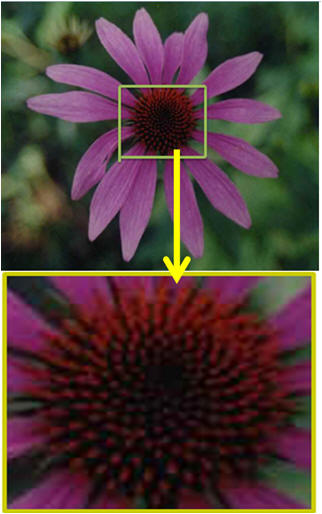
Adaptation

Echinacea purpurea is perhaps one of
the hardiest plants scientists have come across. Although the
purple coneflower prefers well-drained soils, it has the ability to
tolerate the hot summer sun and the dry, droughty soil. This
unique plant blooms in mid-summer and is a perennial plant, meaning
it is present at all seasons of the year. One advantage of
being a perennial plant is that it does not have to live in the
wintertime, where conditions are cold and very harsh. To learn
about Alfalfa, another perennial plant, click
here.
The purple coneflower is a
large, upright stemmed plant that has had several adaptations over
time. They have developed petals that are swept back and are
sy mmetrically
arranged around the center cone, making the process of
photosynthesisis more efficient. The purple coneflower’s roots
are upright, making capillary action and water absorption much
easier. The center cone is tough and prickly, giving it the name
Echinus which is Latin for hedgehog, a prickly little animal that
has the ability to roll up into a ball. Click here to continue
on to
nutrition.
mmetrically
arranged around the center cone, making the process of
photosynthesisis more efficient. The purple coneflower’s roots
are upright, making capillary action and water absorption much
easier. The center cone is tough and prickly, giving it the name
Echinus which is Latin for hedgehog, a prickly little animal that
has the ability to roll up into a ball. Click here to continue
on to
nutrition.